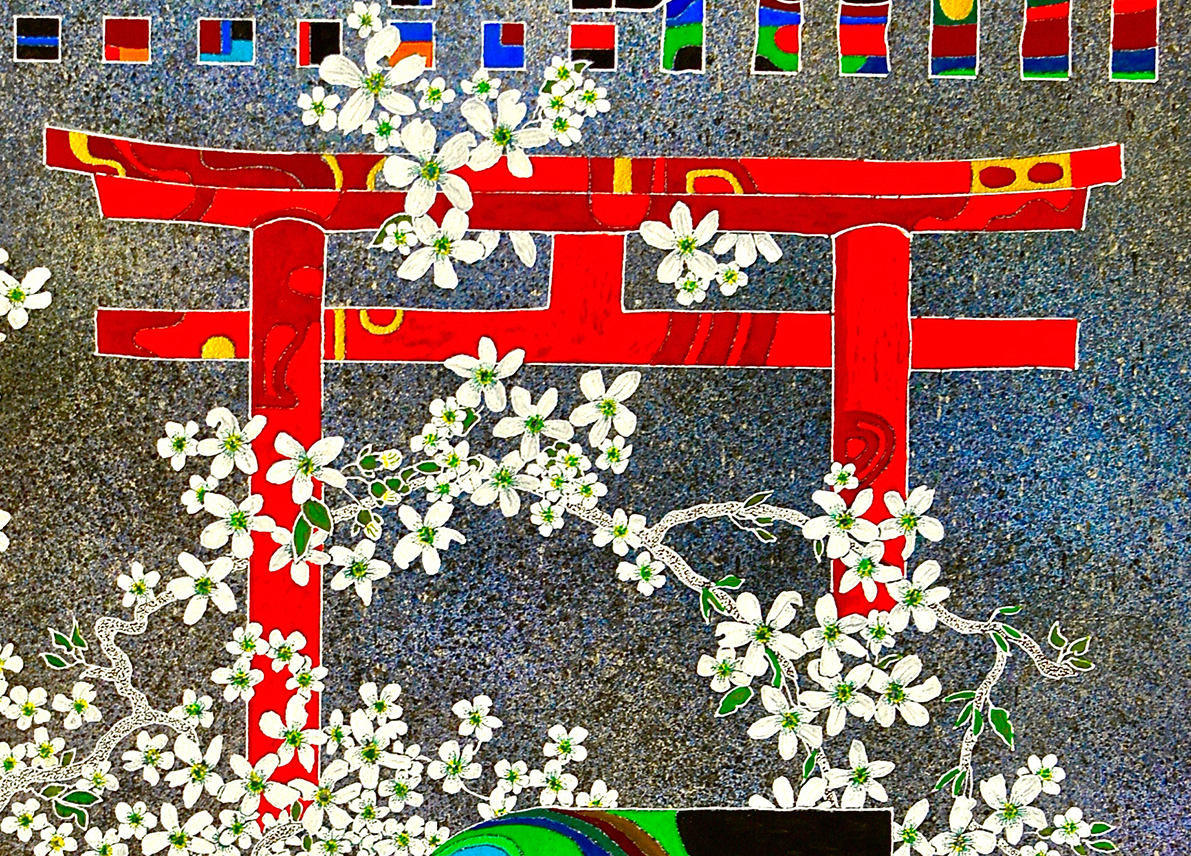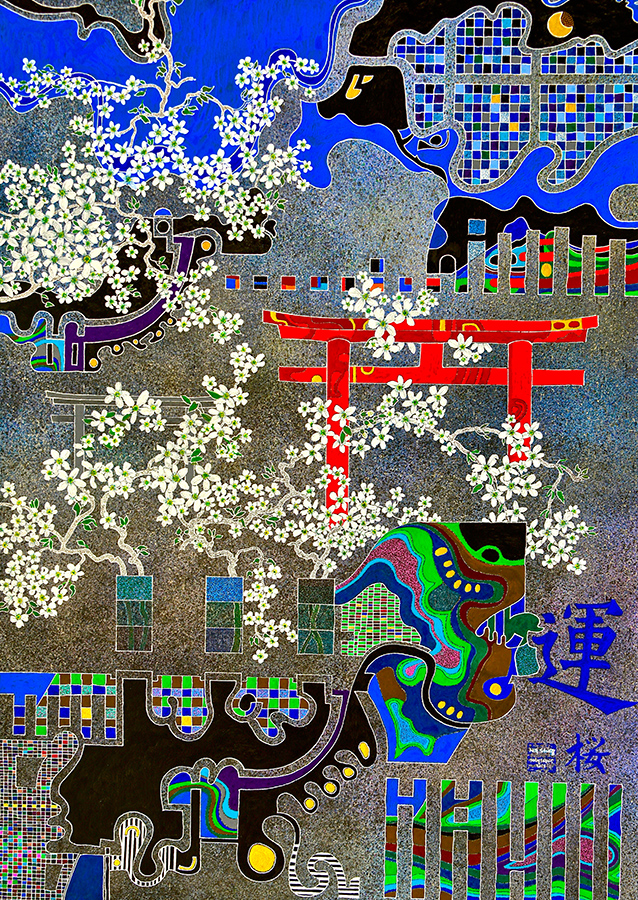

The abundance of white created by the many flowers in the “cherry blossom picture” led me to search for a colourful visual accent or complementary element. I found exactly what I was looking for by painting a Japanese torii gate with its wonderful vermilion into the picture. As I travelled through Japan I saw a number of these gates, most of which at the country's magnificent temples. I feel these gates are the epitome of aesthetics, harmony and architectural perfection. For the Japanese, they generally mark the entrance to a Shinto shrine – a world so complex it is entirely alien to me, yet nevertheless fascinating. In my imagination, I myself often walk through such a gate, and am then captured by a kind of “mystical mood”, a yearning for everything which can only be seen in Japan: a landscape that has been artificially altered by human hands and seems so natural precisely because of this. As an architect, I cannot help but compare the typically Swiss, very often insensitive way of dealing with materials or plants, and the Japanese way. The Japanese know how to work with materials and proportions; nothing is left to chance, everything must be coherent within itself and harmonise with the environment, be it outdoors or indoors. Many of the things that can be seen in Japan – for example sand or rock gardens – contain hidden symbols, turning the humble “gawper” into a marvelling, inspired, searching or even quizzical beholder. In my latest paintings I try to express my great admiration for Japanese art, although admittedly I am lacking in a lot of knowledge: the Japanese language and characters are completely foreign to me, and I have only a rudimentary understanding of Japanese traditions, manners and ways of life. In other words, as a naïve artist, on the purely visual level, I am endeavouring to establish a growing relationship with Japan...








